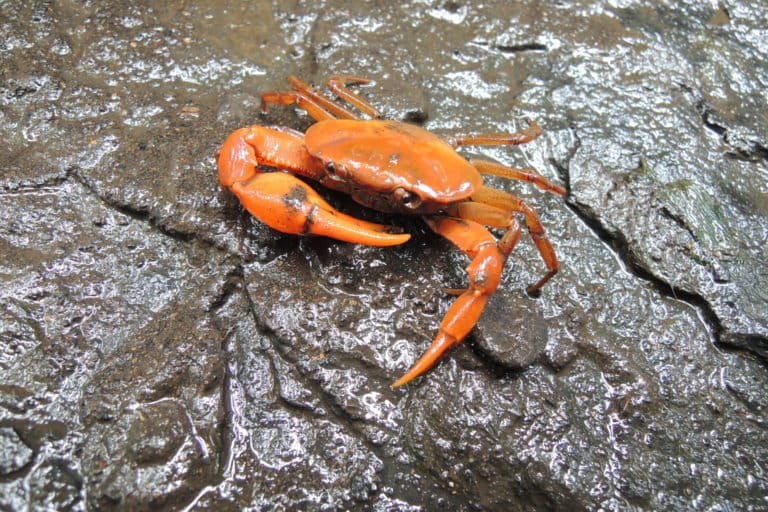Kamy Yeung said she wanted to do more scuba diving. So in 2014, she signed up to be a volunteer diver for a newly launched reef fish survey project in…
KATHMANDU – In July 2022, Tujin Rai, an undergraduate biology student, saw a dead snake outside his home in Dhankuta in Nepal’s eastern hills. He was curious to identify it.…
KUPANG, Indonesia — In March 2021, Davis Marthin Damaledo set out on foot accompanied by his father, Dantje, to pursue his childhood fascination with the natural world around his home…
JAKARTA — A new study has shown that farmers who aren’t traditionally perceived as having the most social and cultural power in their community can be more effective at convincing…
KATHMANDU — Nepali conservationist Sonam Tashi Lama from the Red Panda Network is one of the six global conservation leaders to win this year’s prestigious Whitley Awards, which carries a…
It may be a straw man argument to suggest a distinction between an amateur and professional naturalist (a word that may still mean something). "Natural history" was once like history…
KATHMANDU — Hundreds of bird lovers in Nepal, who would otherwise have been enjoying the spring weather visiting the various bird-watching sites around the country, stayed home in the second…
After she collected a set of camera traps from the ridgeline above Corcovado National Park, conservation biologist Eleanor Flatt said that scientists, staff, and tourists all huddled around her computer…
MARSEILLE, France — Pascal Hagmann lowered a manta trawl — a ray-shaped, metal device with a wide mouth and a fine-meshed net — off the side of his sailboat and…
Almost eight years after Typhoon Haiyan barreled into Busuanga Island in the western Philippines, the lesson it left is still etched in the mind of village leader Annabel Dela Cruz.…
On a clear night in 2017, a team of students from Bogor Institute of Agriculture (IPB) set out into a lowland forest on the southwest coast of Java, Indonesia’s most…
COLOMBO — Sixteen-year-old Pasindu Dilshan from Padukka, a small town in Sri Lanka’s Western province, has always been fascinated by the study of nature. When the COVID-19 lockdown left him…
MANILA — On June 8, an evidence of coral bleaching in a colony of corals was captured by diver and bleach patroller Dina Mae Rañises in Taklong Island National Marine…
In 1997, Charles Moore was sailing a catamaran from Hawaii to California when he and his crew got stuck in windless waters in the North Pacific Ocean. As they motored…
COLOMBO — Legend has it that a group of pygmy hominids known as Nittaewo — meaning “long clawed” in the local language — lived in Sri Lanka up until the…
Last year, Jessie Panazzolo, like many young conservationists (and some middle-aged ones too), didn’t so much feel her career had stalled as that it had been cut out by the…
They left at five o’clock in the morning and traveled all day, sitting in their dugout canoes called peke-peke under the punishing tropical heat — all to attend a meeting.…
Pygmy seahorses are fascinating animals. These tiny, colorful seahorses measure less than an inch (2.7 centimeters) and match their body colors and textures to those of the vibrant corals they…
A group of seven women in their 60s and 70s, who call themselves “the fantastic grandmothers,” have helped uncover a surprisingly large population of venomous sea snakes in the waters…
In Whāingaroa/Raglan on New Zealand’s (NZ’s) west coast, trapping for introduced mammals that prey on endangered native birds is something of a competitive sport. Karioi Project, a local conservation NGO…
In November 2017, two volunteers assisting researchers of the Florida Museum of Natural History dig through a large excavation site in North Florida unearthed the bones of a bird. Those…
Any aquarist who has tried to grow a variety of the colorful Acropora coral in a hobby tank knows how delicate they are – “not for beginners.” And yet this…
Near the Arctic Circle in late summer 2011, I waited at a petrol station on the outskirts of a large tract of Sweden’s boreal forest. My Volvo had completely cooled…
A research team testing the capacity of both citizen scientists and machine learning algorithms to help survey the annual wildebeest migration in Serengeti National Park in Tanzania found that both…
Scandal surrounds indigenous management of a major Easter Island protected area, a newly described freshwater crab species in Colombia, declines in Central America’s peccaries, and a man who can recognize…
Everyone loves camera trap photos. Remotely installed cameras triggered by motion or heat of a passing person or animal, have helped research projects document the occurrence of species or describe…
You can now speak into your mobile phone and have it produce written text. Then have Google translate your words into Japanese, or Hindi. In two seconds. These examples of…
After months of fasting as she traveled hundreds of kilometers across the ocean, a female loggerhead sea turtle hauls herself up onto the sand: the shoreline she has returned to…
When homeowners decide between planting native trees or exotic ginkgos, they also may be deciding the fate of insect-eating birds in their neighborhood, a new study finds. The research, published…
On a midsummer evening earlier this year, Tracy Pham was on a walk along Huntington Beach, California, an outing she usually made to photograph birds. This time, along the way,…





































